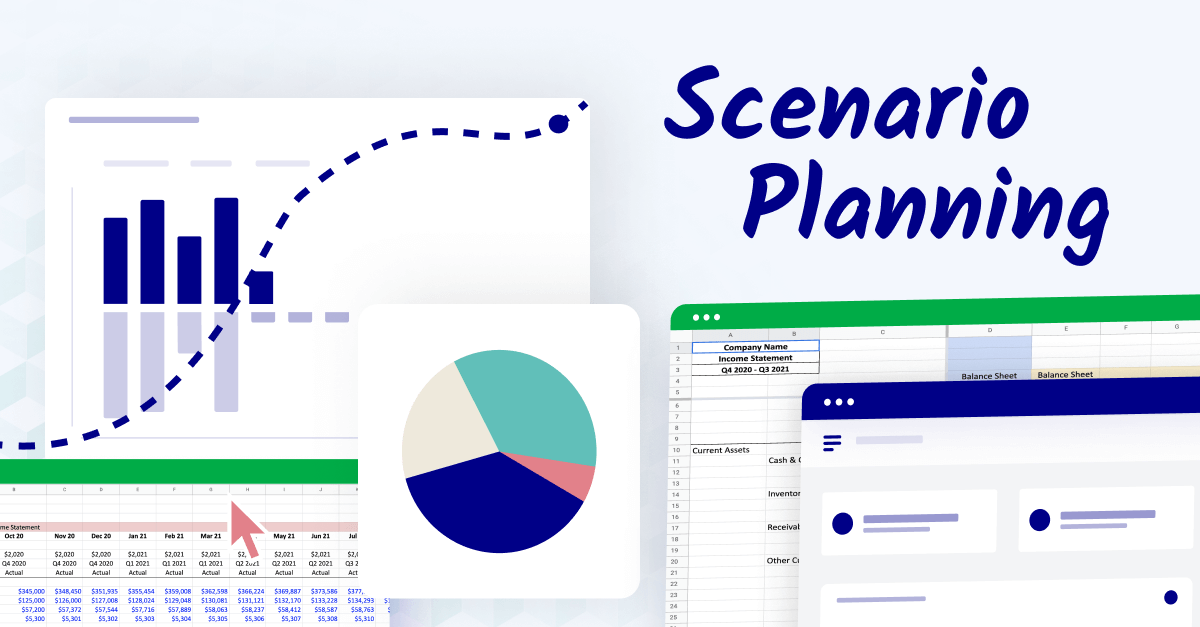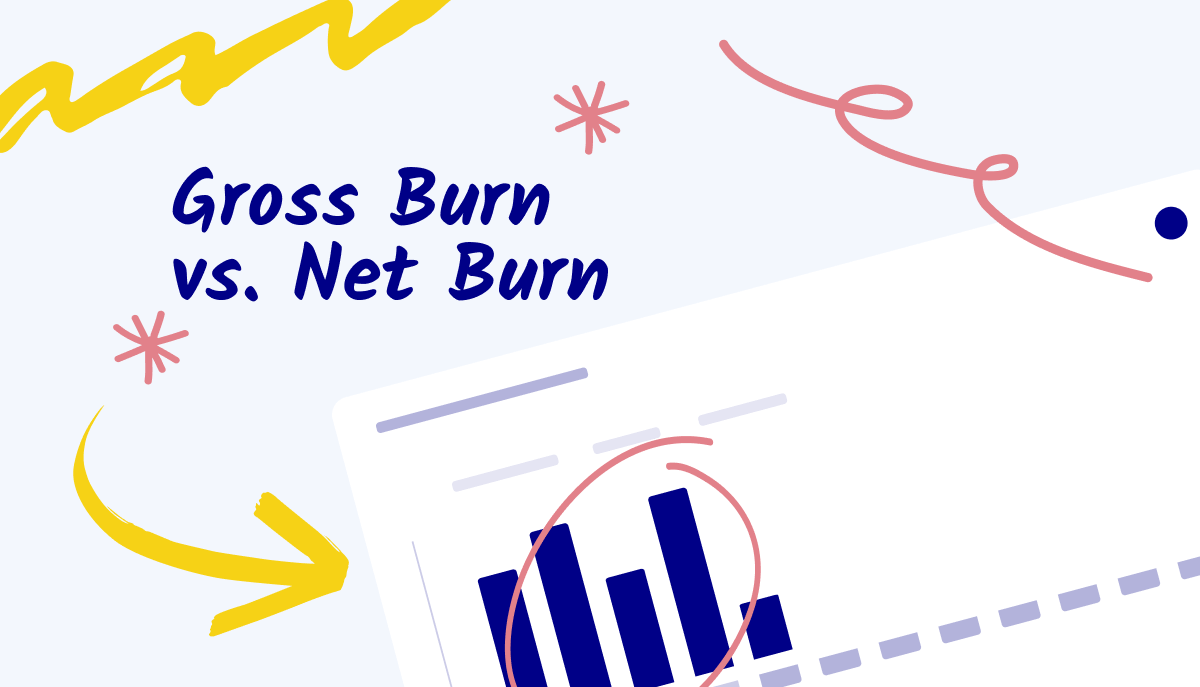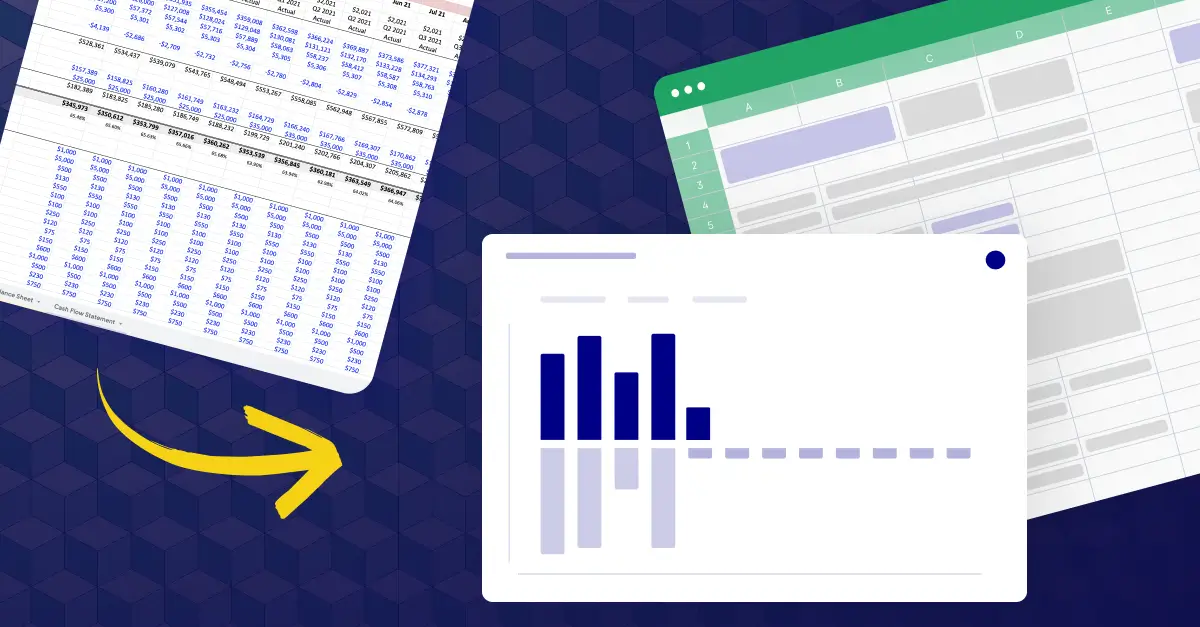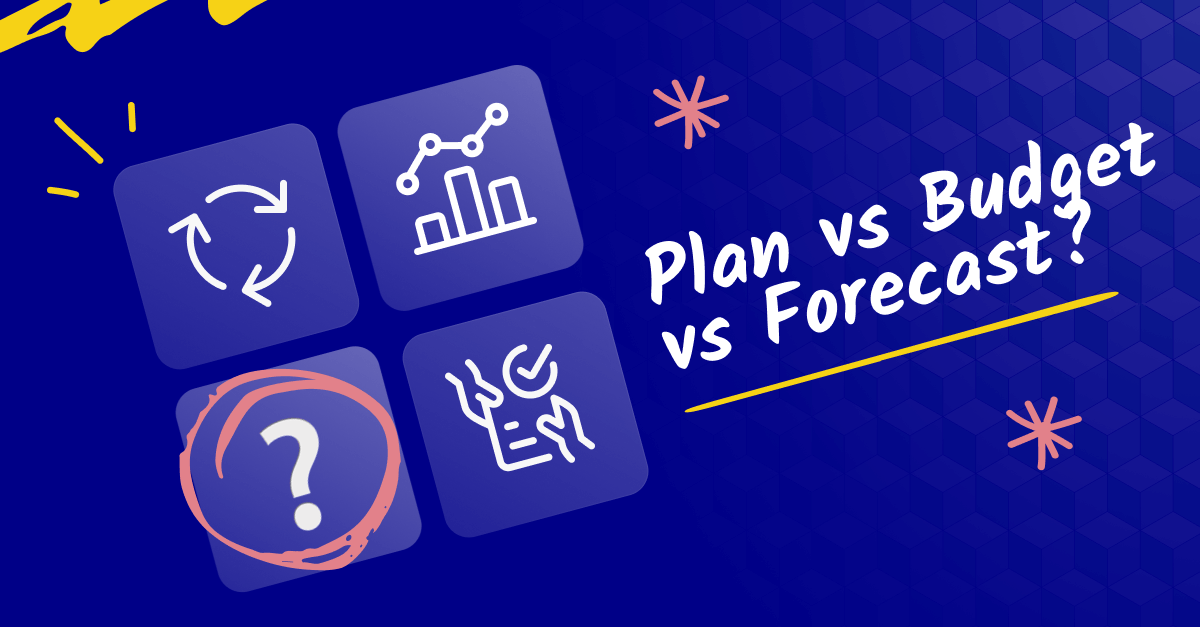What is scenario planning?
Scenario planning is a method of forecasting and analysis that takes a variety of assumptions to drive different outcomes in the future.
This planning method can be traced back to the days of the Cold War when analysts used existing information to predict how nuclear war could play out to manage uncertainties better.
Though nuclear war could be considered an extreme scenario, a global pandemic has done just that, reminding finance and business leaders of the importance of planning for the unknown.
Types of scenario planning
FP&A professionals use multiple types of strategy planning to analyze and prepare for a wide range of potential future scenarios.
Let's take a look at four common types of scenario planning, each designed for a specific purpose and providing essential tools for informed decision-making in a rapidly changing environment.
Quantitative Scenarios: These scenarios are based on financial models, presenting both the best and worst possible outcomes. They allow for quick adjustments by changing key variables and are commonly used for annual business forecasts.
Operational Scenarios: Operational scenarios focus on the immediate impact of an event, helping organizations explore short-term strategic implications and responses to specific situations.
Normative Scenarios: Normative scenarios describe a preferred or achievable end state, emphasizing goals and how the company envisions operating in the future.
Strategic Management Scenarios: These scenarios consider the broader external environment in which products and services are consumed, providing a platform for brainstorming decisions and narratives based on industry, economic, and world views.
Best practices in scenario planning & analysis
Scenario planning projects are most commonly used to run various outcomes in a single budget or plan, which we will cover today.
The most common example is drawing various outcomes from an annual operating budget to improve business decisions around resource allocation and adjustment.
After hundreds of budget cycles, we’ve developed a best practice around multiple scenario development in annual planning.
1. Start with the major goals
These are typically the targets that the business would like to achieve, often set by the CEO and the board (for example: grow x% this year while maintaining the same operating expenses).
The goal plan is also referred to as “top-down” and can be used to back into the major line items of a plan, such as revenue, gross margins, operating expenses, and cash.
It is critically important to assess whether these goals are achievable by building a bottoms-up plan that matches the key drivers and metrics in the goal plan.
Finance leaders should do this assessment, and any dissonance in achievability should be called out to management by citing KPIs from other companies in the industry.
See Rule of 40 and SaaS for a discussion on balancing growth and profit.
2. Follow up with the base plan
While the Goal plan details what the business hopes and expects to achieve, a best practice is to build a robust “bottoms up” plan called the Base Plan or Base Case.
The “Base Case” should be the most realistic version of the plan that still gets the business closest to its most important goals, typically revenue and/or profitability.
This is the time to cross-check the plan with KPIs. It’s also an opportunity to evaluate that the plan has achievable goals that are neither easy to hit nor efficient.
Make sure to assess the need to build in commonly missed assumptions such as employee turnover.

3. Build a best and/or worst-case scenario
Building this plan as a “realistically worst-case” scenario is vital when considering the worst-case scenario.
A company might wonder, “What if we miss revenue by 15%”? What is the one metric the business hopes to optimize if this happens? Is it cash flow? Profitability?
For example, if the company misses revenue but wishes to achieve profitability over increased cash, it will drive different decisions around building the plan.
To increase profitability, they may focus on cutting costs. However, if cash is the goal, the business may be drawing down on a line of credit.
A “best case” scenario might mean that the business has exceeded its goal and can invest in more areas of the business that support this growth.
For high-growth companies, strategic planning out a “best case” can support the business with scaling challenges that arise when the business grows too quickly but doesn’t have the right resources to support the growth.
It’s a highly underutilized practice that can mean the difference between success and failure.
Industry-specific scenario planning examples
These practical cases offer insights into how businesses in different sectors effectively employ scenario planning to navigate uncertainty and make informed decisions.
Manufacturing: Manufacturing companies use scenario planning to prepare for supply chain disruptions caused by various factors, including natural disasters, geopolitical tensions, or supplier issues. By identifying potential vulnerabilities and developing contingency plans, manufacturers ensure resilience in their operations and minimize disruptions' impact.
Real Estate: In real estate, scenario planning revolves around evaluating property value fluctuations during economic downturns. By analyzing different economic scenarios and their effects on the property market, real estate professionals can make informed decisions about investments, risk management, and portfolio diversification.
Healthcare: In healthcare and biotech, scenario planning addresses potential challenges in drug development, such as clinical trial setbacks, safety concerns, or regulatory delays. By considering different scenarios and their implications, organizations can strategize effectively, allocate resources wisely, and navigate the complex landscape of pharmaceutical innovation.
Business Services: For businesses offering professional services, scenario planning plays a crucial role in market entry and expansion strategies. It involves assessing regulatory changes, competitive landscapes, and potential risks in new markets. By anticipating scenarios and adapting their approaches, businesses can successfully enter, grow, and thrive in diverse markets.
Financial Services: In the financial services sector, scenario planning focuses on evaluating investment strategies and risk exposure during market crashes or financial crises. This proactive approach helps financial institutions safeguard assets, adjust portfolios, and maintain stability when faced with challenging market conditions.
Using the scenario plans to optimize performance
Once the major plan versions have been developed, it’s time to put them to work.
Communicating the right plan to the business is often more art than science, but we’ve had good results by using the plans in various ways:
1. Plan to have enough cash to support the worst-case scenario.
Cash is the lifeblood of the business, so it’s worth taking extra precautions around cash flow management.
That may mean looking for additional debt or equity before it’s needed when it’s easier to access.
2. Use the base plan as the operating plan for the business.
Using the Goldilocks method, ensure that the base plan is neither “too hot” nor “too cold.”
Keep in mind that the Budget and the Forecast could vary over time as the business evolves
3. Communicate a revenue range to stakeholders and investors.
Aim for the range to hedge from 10-15% below plan through the base plan.
For example, revenue could be $20-22M for the quarter and the operating expenses and cash plans are tied to the base case.
Why scenario planning is important: Advantages and disadvantages
While a scenario planning project may seem like a golden ticket to success for every organization, it's not a simple process to stand up. It's worth analyzing whether the benefits outweigh the costs before building a scenario planning process from the ground up.
Advantages of scenario planning
-
Risk Mitigation: Because scenario planning is essential the practice of creating back up plans, identifying and avoiding risk becomes a natural part of your organization's financial planning.
-
Improved Decision-Making: With multiple options laid out for business leaders, scenario planning enables more informed strategic decision-making.
-
Flexibility and Adaptability: With multiple plans in place it's easier for organizations to pivot and make changes when needed without having to draw up a Plan B from scratch.
-
Strategic Alignment: By closely monitoring the cause and effect of alternative strategic management scenarios, business leaders can determine which plan aligns more closely with business strategy.
-
Contingency Planning: With a clear understanding of potential risk across plans, organizations can more easily develop contingency plans from potential disruptions or unforeseen circumstances.
-
Communication and Collaboration: Scenario planning requires input and insights into key drivers across the business. This organically creates an environment of collaboration and a holistic approach to financial planning.
-
Improved Forecasting Accuracy: With a varied range of potential outcomes and scenarios incorporated into strategic thinking, finance leaders can forecast more accurately.
Disadvantages of scenario planning
-
Complexity and Resource Intensity: Naturally, scenario planning requires more resources because it involves developing multiple plans instead of assuming Plan A will always work. Some organizations have scenario teams dedicated to mapping out different possible outcomes and the effect on the business's future.
-
Overemphasis on External Factors: It's easy to focus on potential external disruption without focusing on internal business drivers that can either lead to business success or challenges.
-
Assumption Sensitivity: Some business leaders shy away from scenario analysis because it's hypothetical by nature and relies on assumptions that may not accurately reflect reality.
-
Overlooking Unforeseen Scenarios: Scenario planning is not a fail safe. Even the best planners can be left flailing from completely unpredictable scenarios (like Covid-19 for example).
-
Decision Paralysis: With multiple possible outcomes and strategies developed through scenario planning, in some cases it may seem like it's difficult to chart the best course for the business and business leaders can suffer from decision paralysis.
-
Continuous Monitoring Challenges: Scenario planning is a living, breathing project that requires consistent maintenance and adjustment. This focus can be difficult for some finance teams and get in the way of productivity.
The best practices: implemented
As the company approaches its next scenario planning session (or its first-ever!), consider these strategies.
Utilize the industry KPIs to set realistic primary goals before crafting the perfect Base Plan.
From there, it’s easy to build out best and worst-case scenarios to understand how the business plan should be sculpted for the coming periods. In some cases, finance teams can develop a scenario planning templatemul to make future iterations easier.
These scenarios, combined with the organization's goals and careful scenario analysis, can be used to develop a strategic plan for future events.

Scenario planning models
In the realm of scenario planning, having the right models and tools at your disposal can make a world of difference.
These frameworks and instruments are the backbone of effective scenario planning, helping organizations navigate uncertainty and develop strategic responses.
Matrix-Based Scenario Planning: This model involves creating a matrix with multiple variables, each representing a different aspect of the future. By combining various scenarios within the matrix, organizations can visualize the potential outcomes and their corresponding impacts.
Driver Analysis: Driver analysis focuses on identifying the key drivers or forces that shape the future of your industry or market. By thoroughly understanding these drivers, organizations can develop scenarios that revolve around their potential variations.
Cross-Impact Analysis: Cross-impact analysis takes scenario planning a step further by examining the relationships and interactions between different variables. It helps uncover unexpected consequences and dependencies, providing a more holistic view of the scenarios.
Quantitative Modeling: For organizations seeking a more quantitative approach to scenario planning, mathematical models come into play. These models use statistical analysis and mathematical simulations to assess the likelihood and potential outcomes of various scenarios.
Measuring the ROI of scenario planning
Understanding how to quantify the value scenario planning brings to your organization is crucial.
Below are practical methods for measuring the ROI of scenario planning, offering insights into its tangible benefits and its role in bolstering decision-making, risk management, and long-term success.
Financial Metrics: Assess the impact of scenario planning on financial performance, such as revenue growth, cost reduction, and profit margins.
Risk Mitigation: Evaluate the reduction in financial risks and potential losses by comparing scenarios where planning was employed versus where it wasn't.
Resource Allocation: Track the efficiency in resource allocation by comparing scenarios that utilized planning versus those that did not.
Competitive Advantage: Analyze how scenario planning has contributed to gaining a competitive edge in the market.
Operational Efficiency: Evaluate improvements in operational efficiency, including supply chain optimization and workforce management.
Conclusion
Scenario planning serves as a powerful tool for foresight and adaptability, offering valuable insights and strategies to aid organizations in navigating uncertainty, making informed decisions, and charting a path to success.
Ready to take your scenario planning to the next level? Explore the powerful capabilities of Cube and see how it can transform your strategic decision-making.
Book a demo today to unlock the full potential of scenario planning for your organization.







.png)

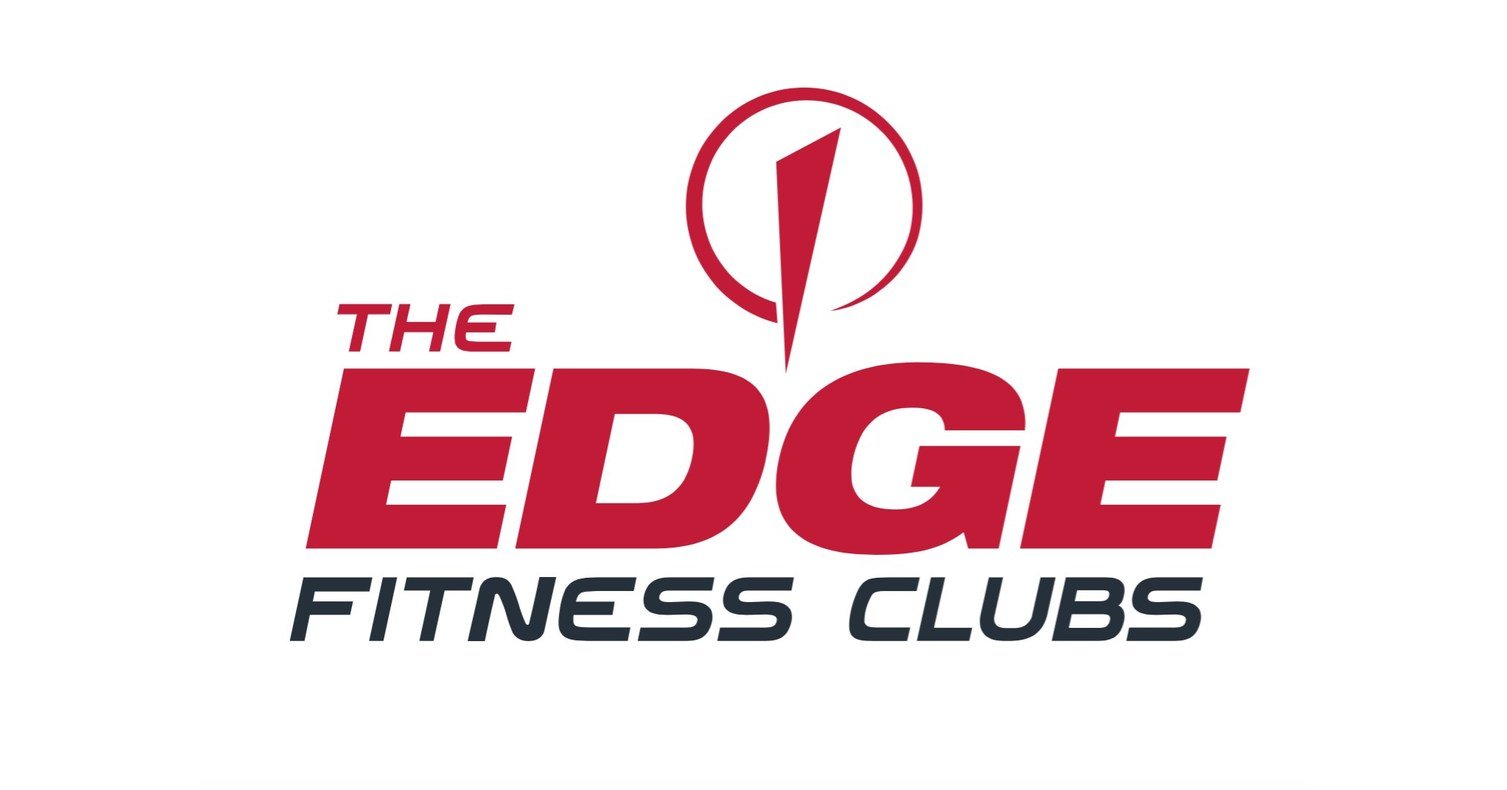


.png)
